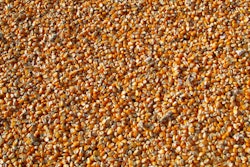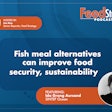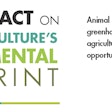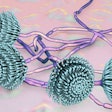
Corn and other cereals, along with soybean meal and other protein sources, remain the staple for most animal feeds worldwide. This trend is not likely to change despite the present disruptions due to climate change, sustainability and a host of other modern issues. Nevertheless, or rather because of that, modern ingredients continue to appear as a response, probably, to such distress calls in an effort to appease public or political concerns – with variable success and an uncertain future.
This is not a new phenomenon. About 20 years ago, dried distillers grains with solubles (DDGS) made a huge impact on how we feed animals. This was because governments decided with the stroke of a pen to include more bioethanol in their fuel mix – for their own reasons and purposes. Some report the same is likely to happen with soybean meal as oil is now mandated in biodiesel, something that will again change the way we feed proteins.
Along with major ingredients, there is also agreat number of smaller efforts, some of which will be presented briefly here. The real scope is not to discuss each one extensively, but rather show that such efforts continue despite market success or lack thereof. Often, such start-ups rely on public funding or on funds that want to invest on such ventures for their own purposes. Sometimes, it is to show they follow the current thinking of their investors or that they are ahead of their time. Nevertheless, such money abounds, but whether their efforts end up in marketable products is debatable.
1. Algae products
Here we must differentiate the macro-algae (protein-fiber-energy sources) from the micro-algae (functional nutrients, like DHA). Research goes back more than two decades and it is mostly positive. Harvesting native macro-algae, and cultivating micro-algae is already feasible. Neither, however, is readily available as an ingredient in many markets worldwide, unless one tries really hard to find a supplier. This class of ingredient has some work to do on marketing, because this is the last and hugely essential step before sales commence.
2. Insects
Whether grown for their fat, protein or as a whole meal-type ingredient, ideas abound, and there are more start-ups than one can remember. Public opinion is rather ignored or rather guided gently, especially because insect flour is touted as the next planet-saving miracle ingredient. Here, marketing has done an excellent job communicating the positive research results, but the fact that public opinion was taken for granted is rather a misstep in the procedure. For now, most start-ups remain just that.
3. Microbial protein
Again, nothing new here as single-cell protein (SCP) can be found in very old textbooks. It failed to convince back then, and new efforts are met with mixed results. In some cases, results are positive, and others they are lacking. In reality, it has to do with the base materials because not all bacteria are the same, and most such products are waste material from producing other ingredients, such as amino acids. Newer efforts to produce microbial proteins from food waste or natural gases are ongoing, but they too appeal to the niche market of novelties, until proven otherwise.
4. Extracted plant proteins
我们都知道这种情况正在发生,soy protein concentrate being a major ingredient in specialty feeds. Market share is coveted by other similar proteins, such as corn protein (not to be confused with corn gluten meal), alfalfa protein and barley protein. Here, the focus is to feed such proteins to high added-value species such as carnivores (pets and fish). This is a rather lucrative market, towards which all other novelties mentioned above have already turned their attention.
The list above is not exhaustive, but it suffices to demonstrate that human intelligence shows no boundaries, regardless of commercial success. We believe such efforts will continue apace, especially with the new Green Deal legislation coming full throttle not only in the U.S. and EU, but also in all those countries that want to export to these huge markets.




















